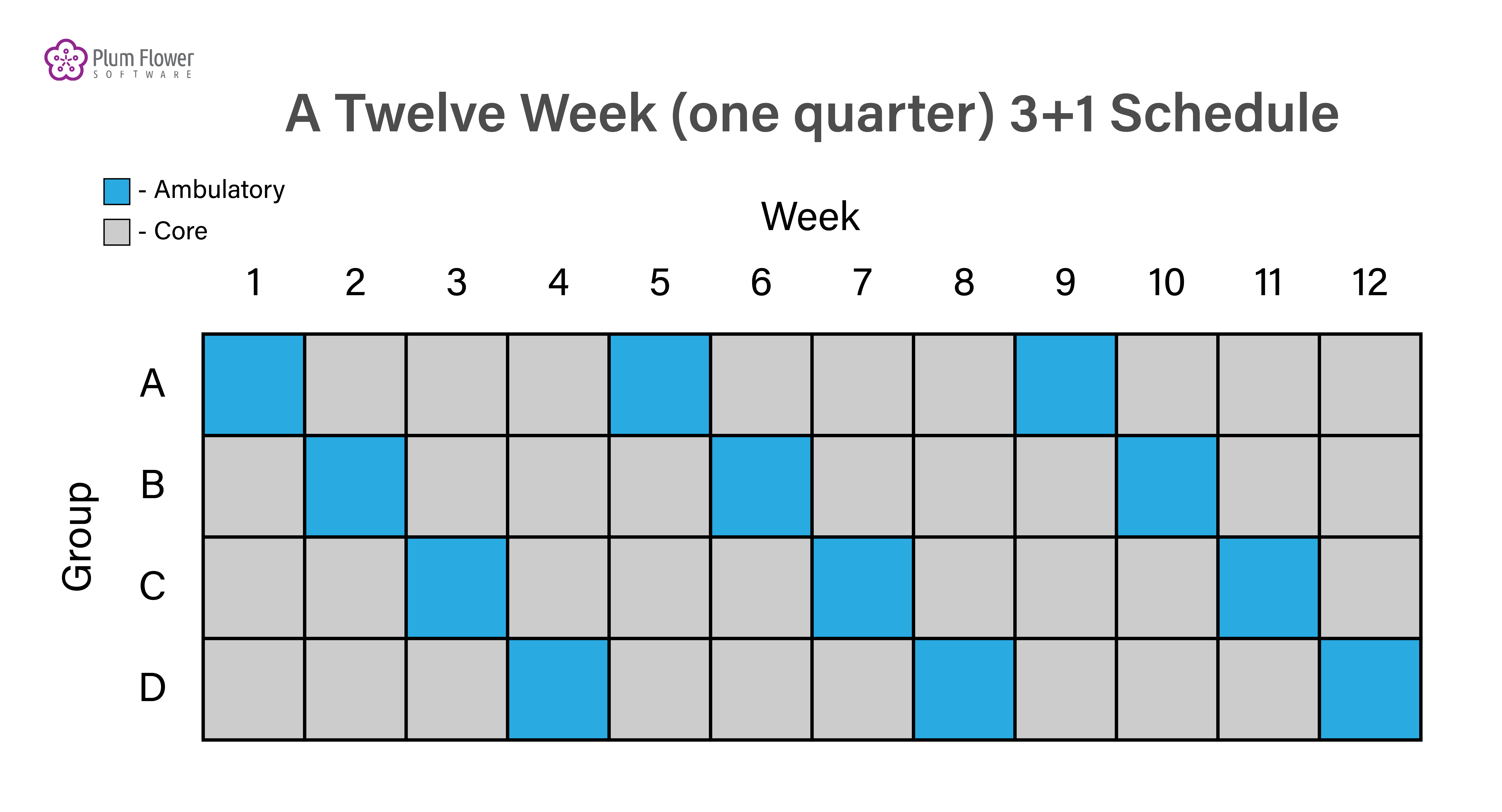Scheduling is a complicated process, especially in graduate medical education. Residents need to complete their requirements in different disciplines, while institutional staffing needs and patient needs must also be considered. In our experience, scheduling in GME, we have seen an approach called X+Y that can be very beneficial in programs with ambulatory training. This format has been in existence for some years, and we see more and more programs adopting it, receiving positive reviews from all stakeholders. Inpatient and ambulatory training have to be balanced. X+Y is a scheduling method that gives residents a better ambulatory learning experience and many more benefits.
How does it work?
Scheduling in residency training traditionally involves an ambulatory component that is worked in during core rotations one afternoon per week. Midday, the resident has to hand off their inpatient responsibilities and get to the clinic session. This makes for a potentially stressful transition to a fragmented ambulatory learning experience each week, making it hard to have a positive experience and establish a good base of training for the resident. Seeing this drawback, some programs started experimenting with X+Y scheduling.
The basic idea of X+Y is to separate the ambulatory component into a block of time where it is the sole assignment for residents. In X+Y scheduling, X stands for the inpatient and elective rotations, and Y is the ambulatory rotation. Residents are assigned to teams and rotate together through the year. You can assign rotations at different intervals according to the needs of your program. We have worked with 3+1, the popular 4+1, and 5+1 variations, and some have implemented a two-week block of ambulatory, as in 4+2 or a 6+2.

X+Why?
There are benefits to separating the ambulatory rotations into longer periods. It strengthens the ambulatory learning experience by immersing the resident for a greater amount of time. They also get a beginning to end of day experience of the clinic, giving a fuller picture of the day to day operations. They don't have to switch contexts between inpatient care and clinic in the middle of the day, allowing residents to provide more focused care, in each setting. Residents also don't have to try to manage responsibilities for two clinical areas at once, which can add stress and conflict.
It also gives residents a full week to have a steady schedule that ambulatory care provides. Having a schedule with nights and a weekend off can provide regular, restorative sleep allowing them to re-align with their circadian rhythm. This recovery of sleep debt can contribute to improved wellness.
Ambulatory patients benefit from better, more focused care from residents. Longer ambulatory blocks mean patients that need a follow-up can schedule an appointment with the same doctor more easily. X+Y improves continuity of care for inpatients. It eliminates the need to find someone to cover a resident's inpatient responsibilities while they are away in the clinic for half a day. Furthermore, there is no longer a midday handoff, reducing the risk for errors.
Ambulatory preceptors can get to know residents better and understand more thoroughly where they are in training. They can effectively help the residents increase competence and provide better care.
Are there drawbacks?
It is hard to find a magic bullet for any schedule. The dedicated ambulatory time is a more significant break to a resident's learning and patient care in core and elective areas. It can be more difficult for residents to get coverage for absences as teams move between the ambulatory block. It can also be harder for small programs to have coverage in separate blocks. For academic reporting, it can be complicated to translate from week rotation format to 4-week block reporting required by the ACGME.
Is it a good fit for my program?
Some pros and cons will need discussion in leadership brainstorming sessions. The transition from traditional scheduling to X+Y is a significant change, but if you want to strengthen ambulatory training, it is worth considering.
Scheduling with X+Y can be complicated, especially for large programs with multiple locations. A good scheduling software system can significantly reduce time and effort for the people responsible for scheduling. It can also eliminate the difficulties of converting an X+Y schedule into requirements for a report to the ACGME.
Overall, X+Y can create a better ambulatory education experience and have a positive effect on wellness for residents. There will always be challenges to overcome in individual programs. Still, if your goal is to improve this line of training and encourage more residents into primary care, it is an excellent approach to implement.